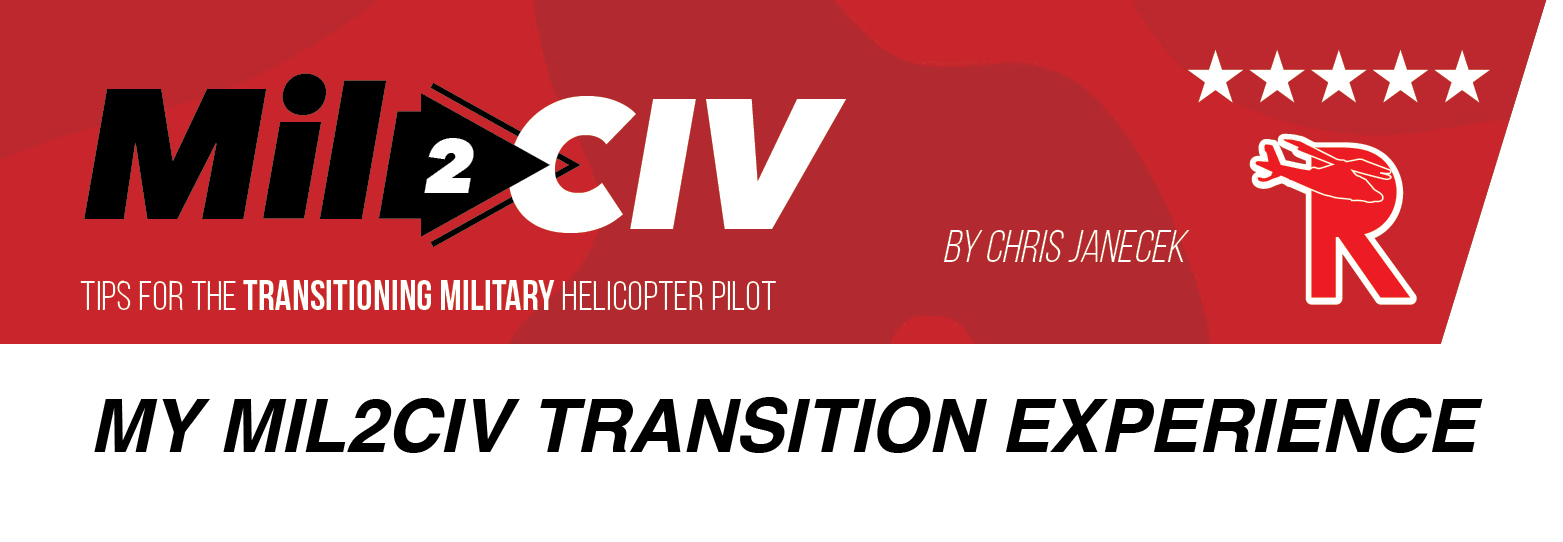|
Jul
27
2025
|
|
Posted 161 days ago ago by Admin
|
|

By Chris Janecek
To put me in perspective: I didn’t have a squadron command tour, no beltway time, and I wasn’t a ring knocker. I was just a fleet average major trying to do above average work. I was an XO, a schoolhouse advanced IP, a JTAC, a school-trained ASO, and I even flew Marine One for a bit. So, I thought I had the experience to succeed in the civilian HEMS landscape and that’s what I wanted to do. I had no interest in the airlines, agriculture or utility. With that background on me, here is my take on challenges and wins I realized in my transition to civilian flight and my final recommendations for those making the transition.
Challenges
The first set of challenges was getting my head around the civilian pipeline and what makes those trained that way tick. What did I bring to the table that’s important and what didn’t need to be put on the table?
I didn’t find indoc. training to be very difficult, but when I got to my base there was a lot of stress that I didn’t expect. Firstly, I was a single pilot now and I didn’t realize how much we rely on each other on a crewed flight deck. At every decision gate, I would have to evaluate all my options over and over to fly safely. What made those decisions harder was having med. crew feeding me their take on fuel, what they expected in the LZ, what their weather apps were showing them. It can be a lot of random information that gets into your loop. I quickly learned to defend my professional space in that regard. You also have to bring those same members into your loop in cases like inadvertent IMC or NVG operations beyond preflight briefings.
The other hurdle was the lack of proficiency you can have in flying smaller aircraft if you are used to medium or heavy lift airframes. I was lucky because our program would let us take the aircraft out each shift if we felt we needed to knock some rust off.
Wins
Being by yourself, you not only have to stay in front of the aircraft, but you have to stay in front of the crew by briefing each phase of the flight as you are doing it, so they know what you are doing and the hazards you will need them to help you with. This goes beyond talking about trees and wires in an LZ brief, but illusions or other disorienting factors that can be encountered and how the med. crew can help you in those cases. In my case those turned into wins every time. The other win that took me time to learn was get as much of a revenue flight done as you can. If something could possibly interfere with that, call it early and just move on with your day.
Recommendations
My recommendation to those transitioning to civilian life is to network with folks that work for the companies in which you are interested. Some cultures aren’t always the right fit and some have hard and fast requirements you don’t have yet or don't know about. A cup of coffee at an FBO can go a long way. Another recommendation is to find an ally or mentor that can help you navigate the FAA, the VA, your rating, and what that can really mean to the right or wrong Air Medical Examiner. I didn’t have that guidance and had to spend a fair amount of time and money proving stuff to the FAA to keep my medical certification. My last recommendation is to attend a Mil2Civ seminar; I can't praise those folks enough. I went on terminal leave on a Friday and checked in for my indoc. training on a Monday.
READ MORE ROTOR PRO: https://justhelicopters.com/Magazine
WATCH ROTOR PRO YOUTUBE CHANNEL: https://buff.ly/3Md0T3y
You can also find us on
Instagram - https://www.instagram.com/rotorpro1
Facebook - https://www.facebook.com/rotorpro1
Twitter - https://twitter.com/justhelicopters
LinkedIn - https://www.linkedin.com/company/rotorpro1